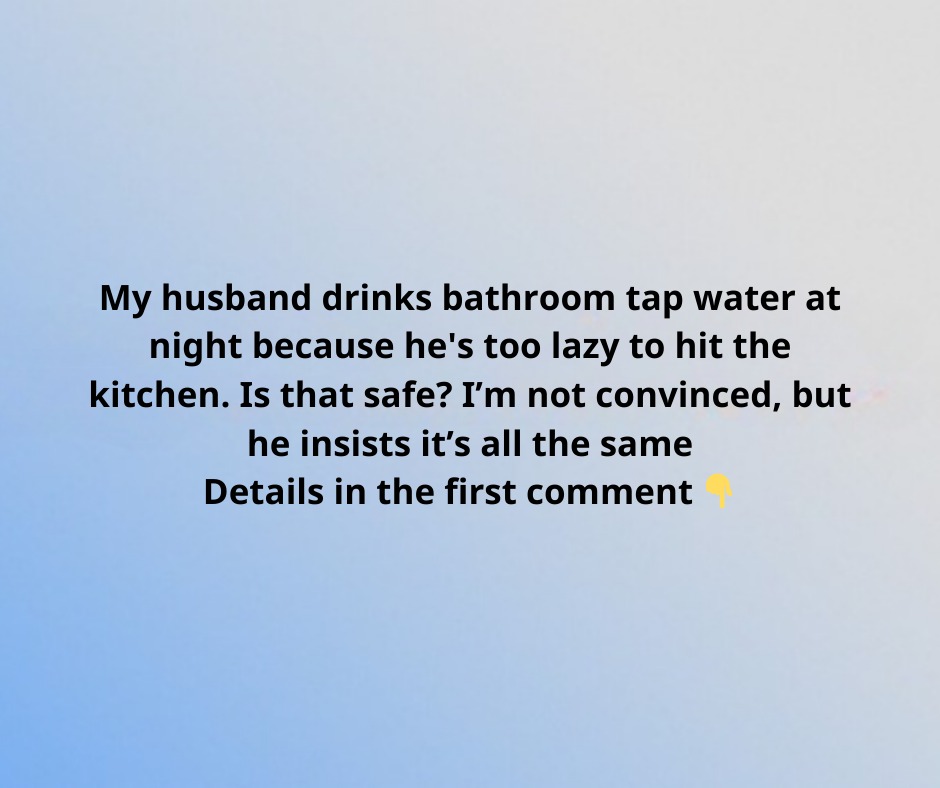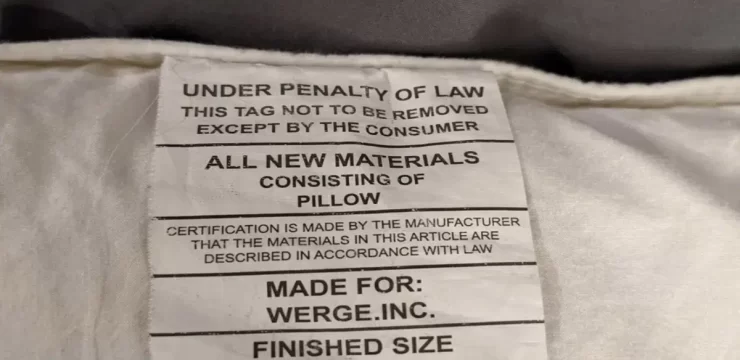If your husband drinks from the bathroom tap at night because it’s closer than the kitchen, you might be wondering if it’s really safe. You’re not alone. Many people choose the bathroom tap for convenience, but there are genuine concerns about whether this is a good idea. So, is drinking bathroom tap water a harmless habit, or could it be risky? In this article, we’ll look at the potential health risks, safety tips, and practical steps to help you make an informed choice—even if it’s during those late-night thirsts.
 =
=
It’s no secret that convenience is the main reason people turn to the bathroom tap. When you wake up thirsty in the middle of the night, the last thing you want is a long walk to the kitchen. The bathroom is often closer, making it the easiest choice when you’re half-asleep.
However, convenience doesn’t always equal safety. There are some differences between kitchen and bathroom water sources that you should be aware of before making this a regular habit. The safety of drinking bathroom tap water depends on several factors, so let’s break down the potential risks.
Potential Concerns with Bathroom Tap Water
Before you assume all water taps are the same, consider the following factors that may affect the quality of bathroom tap water:
1. Stagnation and Contaminants
Bathroom taps are often used less frequently than kitchen taps, especially at night. This can lead to water sitting stagnant in the pipes for longer periods, increasing the chance of bacteria or contaminants building up. When water isn’t regularly flowing, it’s more likely to collect substances like rust, lead, or bacteria that can affect its safety.
Additionally, bathroom plumbing is often older than kitchen plumbing. This can mean more residue buildup, which might make bathroom water less clean compared to the more frequently used kitchen tap.
2. Differences in Filtration Systems
In many homes, the kitchen tap benefits from more extensive filtration. This could be due to water softeners, under-sink filters, or other systems designed to ensure cleaner drinking water. Bathroom water, on the other hand, often doesn’t go through the same level of filtration. As a result, it may contain more impurities, making it less safe to drink regularly.
3. Lower Maintenance of Bathroom Fixtures
Let’s be honest—most people pay more attention to cleaning and maintaining their kitchen taps than their bathroom faucets. This can lead to mineral deposits, grime, or even bacteria growth inside bathroom fixtures over time. This lower level of maintenance can affect the quality of the water that comes from the bathroom tap.
4. Potential for Old or Corroded Pipes
If you live in an older home, the bathroom pipes may be more prone to corrosion. Over time, older pipes can leach contaminants like lead into the water, especially if they’re used less frequently. This makes the water quality in the bathroom potentially lower than that of the kitchen, where pipes are often newer and more maintained.
How to Make Bathroom Tap Water Safer
If drinking from the bathroom tap is a common practice in your home, here are some steps you can take to improve its safety:
1. Inspect Your Plumbing Regularly
Hire a professional to inspect your plumbing system, especially in the bathroom. They can check for signs of rust, leaks, and potential contamination. Addressing any issues found during the inspection can greatly improve the water quality throughout the house, including the bathroom.
2. Install Bathroom Water Filters
If drinking from the bathroom tap is a nightly habit, consider installing a small filter directly on the bathroom faucet. While these filters may not be as powerful as those in the kitchen, they can still help reduce impurities, making the water safer to drink.
3. Use Water Test Kits for Peace of Mind
If you want to be sure about the safety of your bathroom tap water, use a water test kit. These kits can detect common contaminants like lead, chlorine, and bacteria. They are easy to use and provide quick results, allowing you to determine whether the bathroom tap water meets safety standards. If the test shows high contamination levels, it’s best to avoid drinking from that source until the issue is resolved.
4. Keep a Water Bottle by Your Bed
If you’re still uncertain about the safety of bathroom tap water, consider keeping a filled water bottle or glass of filtered water on your bedside table. This provides a convenient way to quench your thirst at night without having to use the bathroom tap or make a trip to the kitchen.
Is Bathroom Tap Water Always Unsafe?
While bathroom tap water may be more prone to risks than kitchen water, it’s not always unsafe. In many areas, both the kitchen and bathroom taps draw from the same municipal water source, meaning they undergo the same initial treatment. The main issue is not the source but the plumbing and fixtures that deliver the water, which can vary in quality and maintenance.
Factors Affecting Water Quality Throughout the House
- Geographic Location: If you live in an area with hard water, bathroom pipes may accumulate more minerals, affecting water quality.
- Type of Plumbing: Older plumbing is more likely to have issues with contaminants, especially in pipes that are used less frequently.
- Water Source: Homes with private wells may have varying water quality, depending on the filtration system setup.
When to Avoid Bathroom Tap Water
While occasional sips from the bathroom tap are unlikely to cause harm, it’s best to avoid it in certain situations:
- If your plumbing is visibly corroded or hasn’t been updated in many years.
- If you notice unusual smells or discolored water from the bathroom tap.
- If water tests show high levels of contaminants like lead.
Conclusion: Be Smart About Water Choices
While it might be more convenient for your husband to drink from the bathroom tap at night, it’s important to understand the potential risks. Factors like stagnation, filtration differences, and plumbing age play significant roles in water safety. By taking precautions—like installing filters, conducting regular water tests, and keeping bottled water handy—you can make safer choices, even if it’s 2 a.m.
In the end, it’s all about balancing convenience with health considerations. Regular maintenance and testing can help ensure that the water you drink is safe, no matter which tap it comes from.





